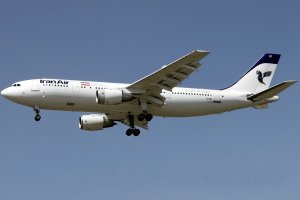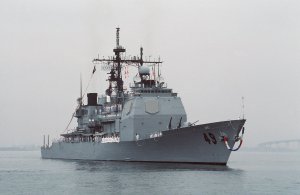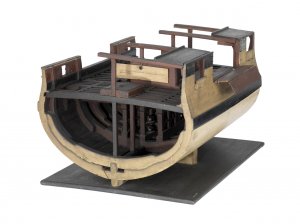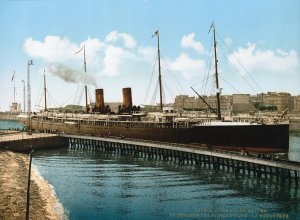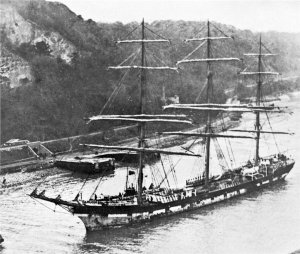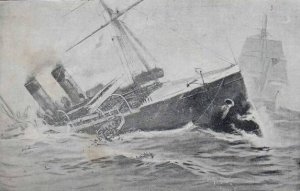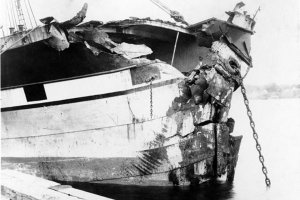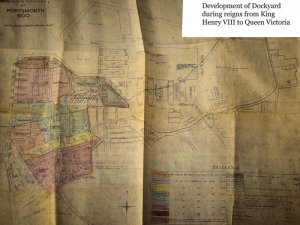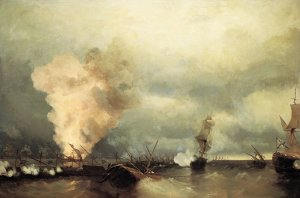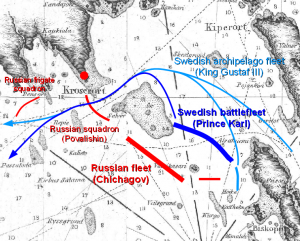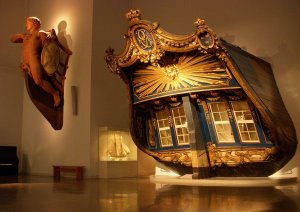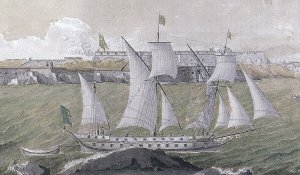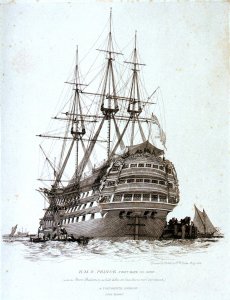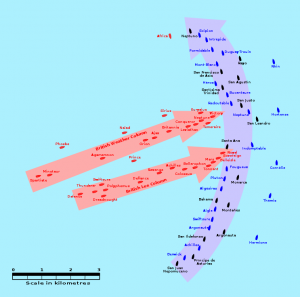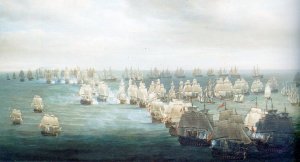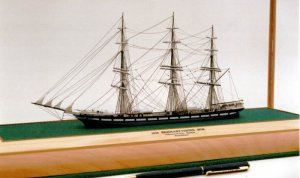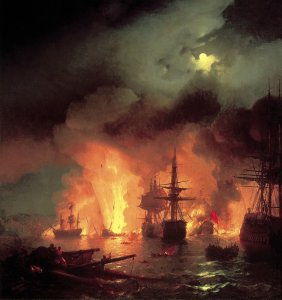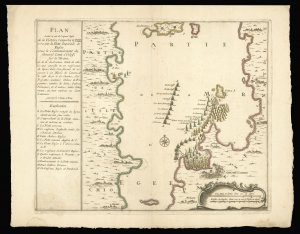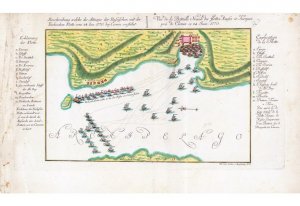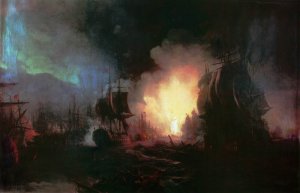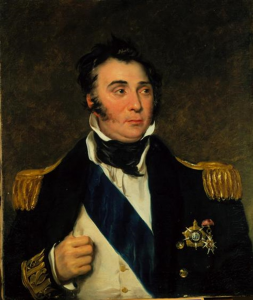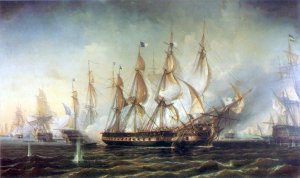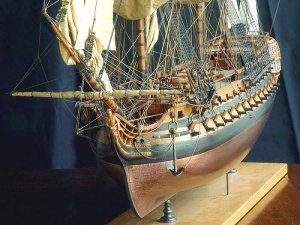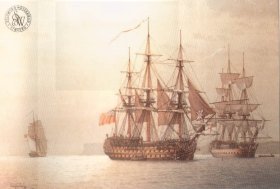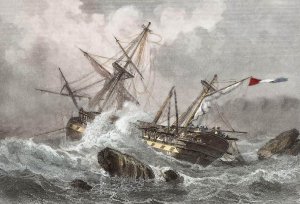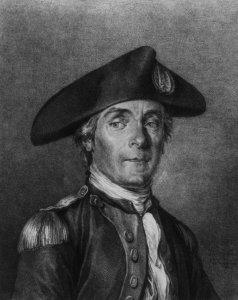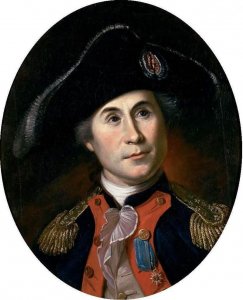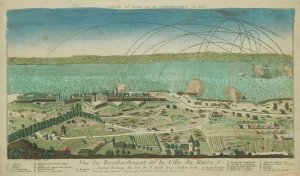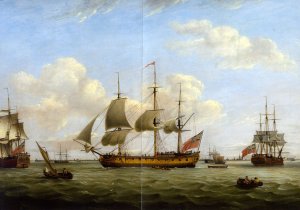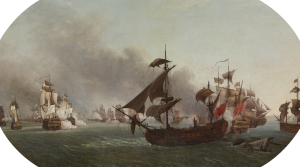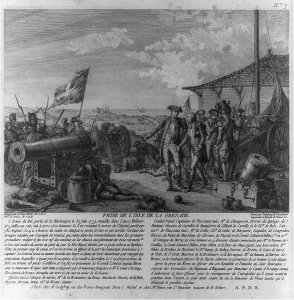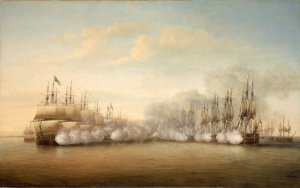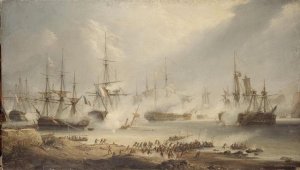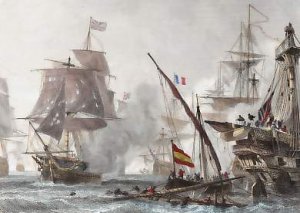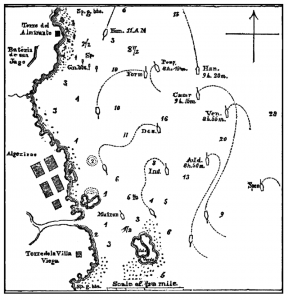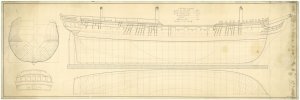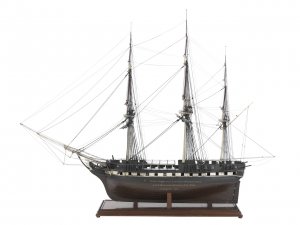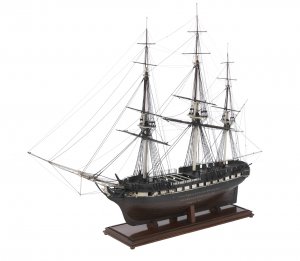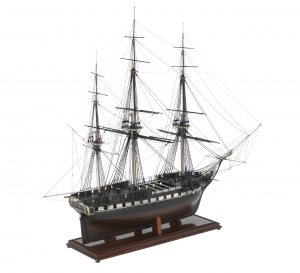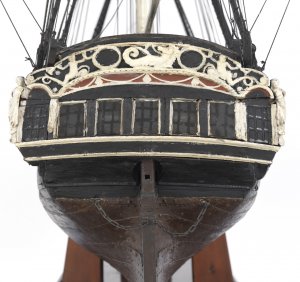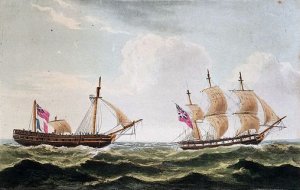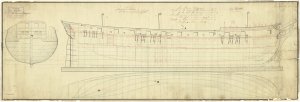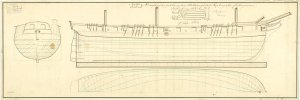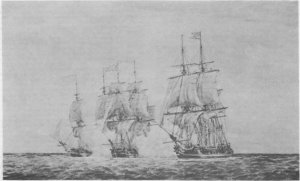July 3, 1952
On her maiden voyage—July 3–7, 1952 - USS United States broke the transatlantic speed record held by the RMS Queen Mary for the previous 14 years by over 10 hours, making the maiden crossing from the Ambrose lightship at New York Harbor to Bishop Rock off Cornwall, UK in 3 days, 10 hours, 40 minutes at an average speed of 35.59 knots (65.91 km/h; 40.96 mph). The maximum speed attained for United States is disputed as it was once held as a military secret. The issue stems from an alleged value of 43 knots (80 km/h; 49 mph) that was leaked to reporters by engineers after the first speed trial. In a 1991 issue of Popular Mechanics, author Mark G. Carbonaro wrote that while she could do 43 knots (80 km/h; 49 mph) it was never attained. Other sources, such as one done by John J. McMullen & Associates places the ship's highest possible sustained top speed at 35 knots (65 km/h; 40 mph).

Liner United States photographed from Portsmouth on return maiden voyage to New York, summer 1952.
The ship
The SS United States is a retired luxury passenger liner built in 1950–51 for United States Lines at a cost of US$79.4 million ($749 million in 2017). The ship is the largest ocean liner constructed entirely in the United States and the fastest ocean liner to cross the Atlantic in either direction, retaining the Blue Riband for the highest average speed since her maiden voyage in 1952. She was designed by American naval architect William Francis Gibbs and could be turned into a troopship if required by the Navy in time of war. The United States maintained an uninterrupted schedule of transatlantic passenger service until 1969 and was never used as a troopship.
The ship has been sold several times since the 1970s, with each new owner trying unsuccessfully to make the liner profitable. Eventually, the ship's fittings were sold at auction, and hazardous wastes, including asbestos panels throughout the ship, were removed, leaving her almost completely stripped by 1994. Two years later, she was towed to Pier 82 on the Delaware River, in Philadelphia, where she remains today.
Since 2009, a preservation group called the SS United States Conservancy has been raising funds to save the ship. The group purchased her in 2011 and has drawn up several unrealized plans to restore the ship, one of which included turning the ship into a multi-purpose waterfront complex. In 2015, as its funds dwindled, the group began accepting bids to scrap the ship; however, sufficient donations came in via extended fundraising. Donations in the six figures have kept the ship berthed at its Philadelphia dock while the group continues to further investigate restoration plans.
https://en.wikipedia.org/wiki/SS_United_States
On her maiden voyage—July 3–7, 1952 - USS United States broke the transatlantic speed record held by the RMS Queen Mary for the previous 14 years by over 10 hours, making the maiden crossing from the Ambrose lightship at New York Harbor to Bishop Rock off Cornwall, UK in 3 days, 10 hours, 40 minutes at an average speed of 35.59 knots (65.91 km/h; 40.96 mph). The maximum speed attained for United States is disputed as it was once held as a military secret. The issue stems from an alleged value of 43 knots (80 km/h; 49 mph) that was leaked to reporters by engineers after the first speed trial. In a 1991 issue of Popular Mechanics, author Mark G. Carbonaro wrote that while she could do 43 knots (80 km/h; 49 mph) it was never attained. Other sources, such as one done by John J. McMullen & Associates places the ship's highest possible sustained top speed at 35 knots (65 km/h; 40 mph).

Liner United States photographed from Portsmouth on return maiden voyage to New York, summer 1952.
The ship
The SS United States is a retired luxury passenger liner built in 1950–51 for United States Lines at a cost of US$79.4 million ($749 million in 2017). The ship is the largest ocean liner constructed entirely in the United States and the fastest ocean liner to cross the Atlantic in either direction, retaining the Blue Riband for the highest average speed since her maiden voyage in 1952. She was designed by American naval architect William Francis Gibbs and could be turned into a troopship if required by the Navy in time of war. The United States maintained an uninterrupted schedule of transatlantic passenger service until 1969 and was never used as a troopship.
The ship has been sold several times since the 1970s, with each new owner trying unsuccessfully to make the liner profitable. Eventually, the ship's fittings were sold at auction, and hazardous wastes, including asbestos panels throughout the ship, were removed, leaving her almost completely stripped by 1994. Two years later, she was towed to Pier 82 on the Delaware River, in Philadelphia, where she remains today.
Since 2009, a preservation group called the SS United States Conservancy has been raising funds to save the ship. The group purchased her in 2011 and has drawn up several unrealized plans to restore the ship, one of which included turning the ship into a multi-purpose waterfront complex. In 2015, as its funds dwindled, the group began accepting bids to scrap the ship; however, sufficient donations came in via extended fundraising. Donations in the six figures have kept the ship berthed at its Philadelphia dock while the group continues to further investigate restoration plans.
https://en.wikipedia.org/wiki/SS_United_States



